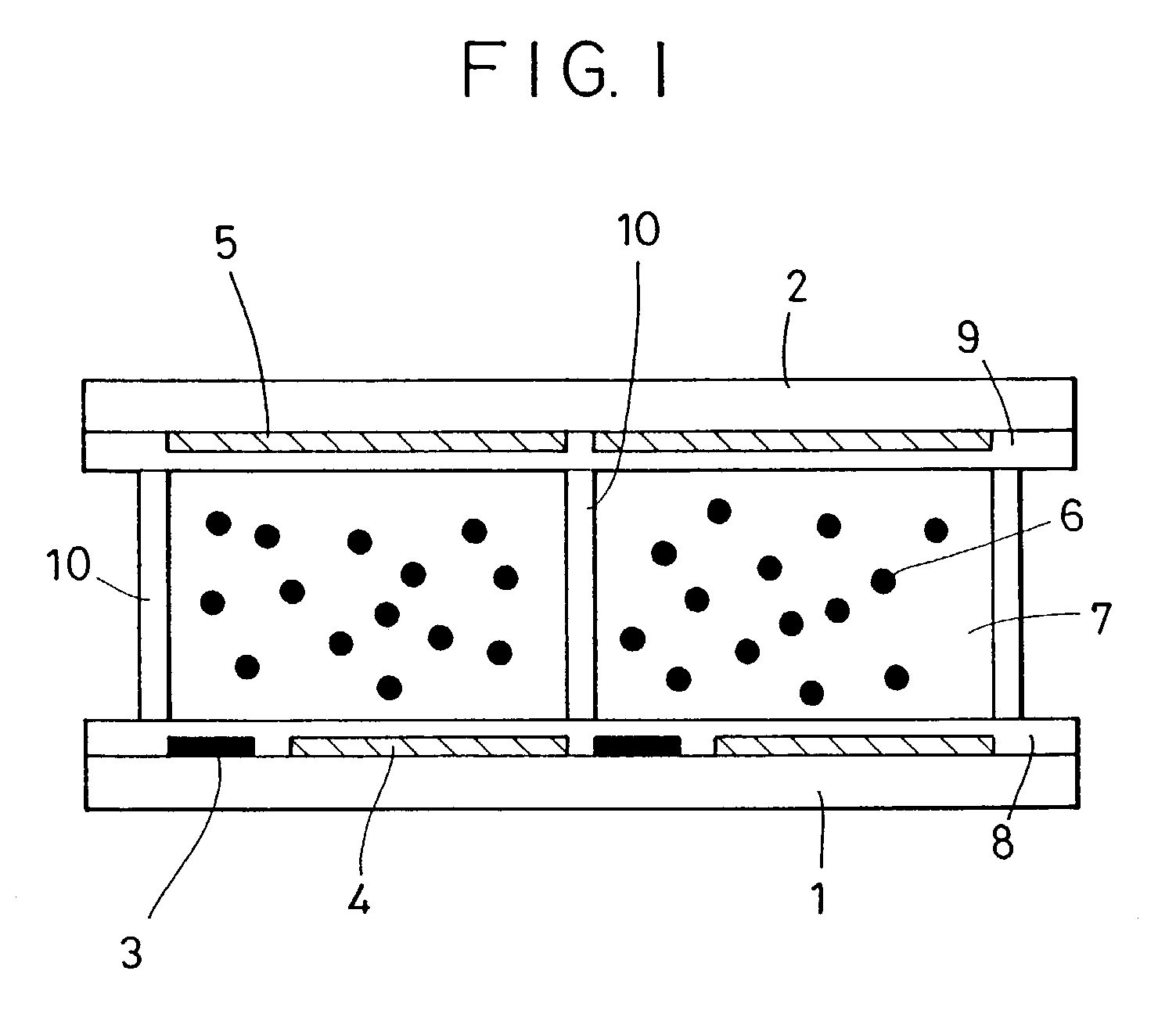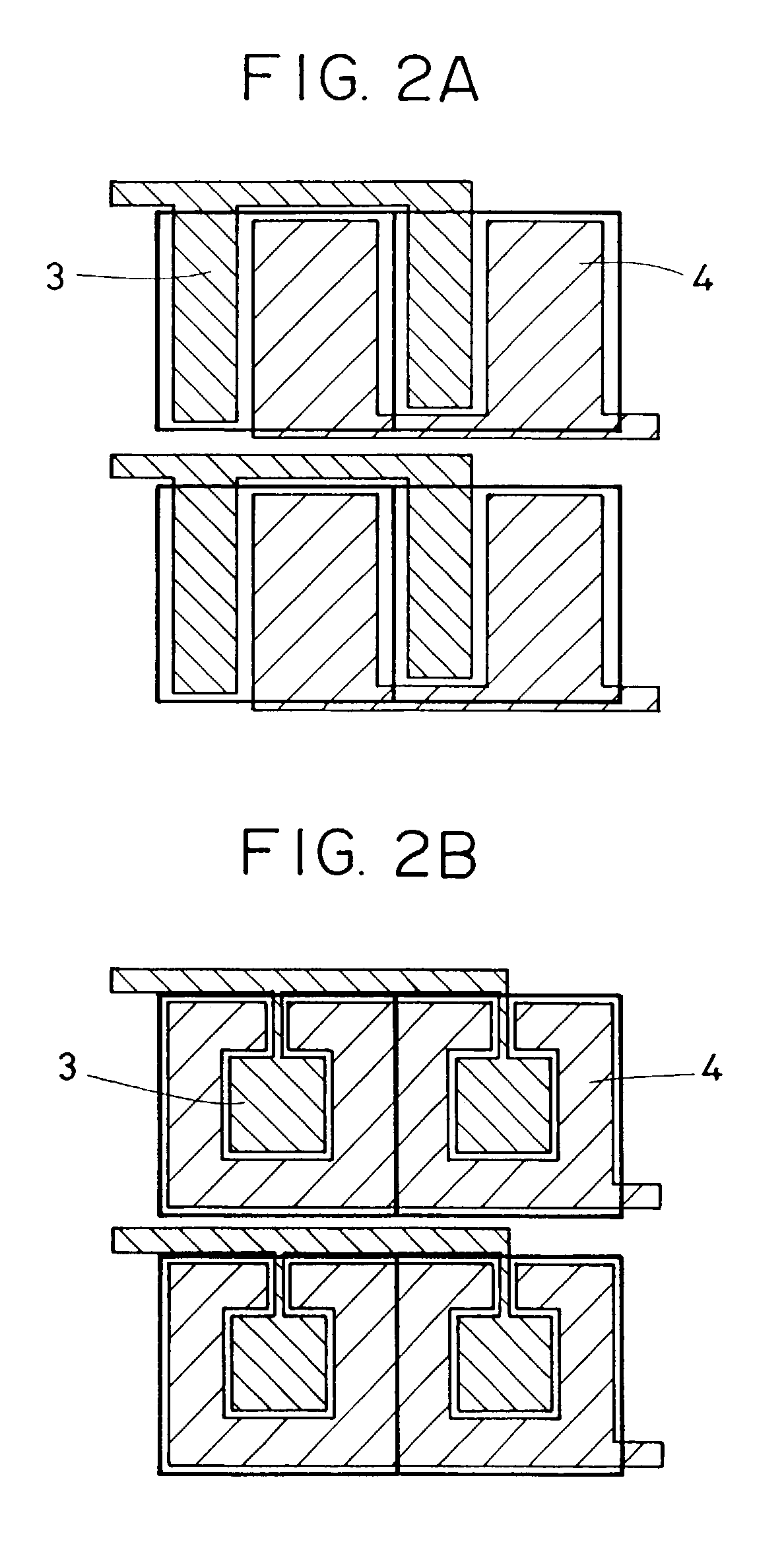Electrophoretic display method and device
- Summary
- Abstract
- Description
- Claims
- Application Information
AI Technical Summary
Benefits of technology
Problems solved by technology
Method used
Image
Examples
example 1
[0134]In this Example, a (3×3)-matrix display cell having the cell construction shown in FIG. 1 was fabricated and operated in accordance with the above-described Passive Matrix Addressing Method 1 to implement the passive matrix addressing based on bi-directional writing. The bi-directional writing is difficult to realize with the construction disclosed in the above-cited Japanese Patent Publication No. (by PCT application) 8-507154, and is one feature specific to the present invention. With this feature, the display cell of this Example is able to perform the bi-directional writing, i.e., changes from a white to black view and writing from a black to white view.
[0135]FIG. 14 is a plan view of the (3×3)-matrix display cell thus fabricated. The size of one pixel was 1 mm×1 mm, and the area ratio of the first driving electrode to the second driving electrode was 20:80.
[0136]A method of manufacturing the cell will be briefly described below with reference to FIGS. 1 and 14. First, an ...
example 2
[0160]In this Example 2, the (3×3)-matrix display cell employed in above Example 1 was operated in accordance with the above-described Passive Matrix Addressing Method 2 to implement the passive matrix addressing based on bi-directional writing.
[0161]A display cell used in this Example has exactly the same construction as that used in above Example 1 (plan view being shown in FIG. 14), and therefore an explanation of the manufacturing process is omitted herein.
[0162]The addressing method in this Example will be described below.
[0163]As with above Example 1, the first driving electrodes 3 were used as first data-signal electrode lines (D11–D13), the second driving electrodes 4 were used as second data-signal electrode lines (D21–D23), and the third driving electrodes 5 were used as scan-signal electrode lines (S1–S3).
[0164]FIG. 16A is a time chart of driving voltages applied to the first and second data-signal electrode lines and the scan-signal electrode lines, and FIG. 16B shows a ...
example 3
[0168]In this Example 3, a (3×3)-matrix display cell having the cell construction shown in FIG. 10, wherein the barriers 12 were provided on the surfaces of the third driving electrodes 5 arranged on the underside of the second substrate 2, was fabricated and operated with the passive matrix addressing based on bi-directional writing.
[0169]A plan view of the (3×3)-matrix display cell thus fabricated was the same as that shown in FIG. 14. As with above Example 1, the size of one pixel was 1 mm×1 mm, and the area ratio of the first driving electrode 3 to the second driving electrode 4 was 20:80.
[0170]A method of manufacturing the cell will be briefly described below with reference to FIGS. 10 and 14.
[0171]First, an insulating layer 8 made of an acrylic resin containing a white pigment, such as alumina, dispersed therein was formed on an overall surface of a first substrate 1 formed of a PET film having a thickness of 200 μm. Then, an ITO film was formed as a second driving electrode 4...
PUM
 Login to View More
Login to View More Abstract
Description
Claims
Application Information
 Login to View More
Login to View More - R&D
- Intellectual Property
- Life Sciences
- Materials
- Tech Scout
- Unparalleled Data Quality
- Higher Quality Content
- 60% Fewer Hallucinations
Browse by: Latest US Patents, China's latest patents, Technical Efficacy Thesaurus, Application Domain, Technology Topic, Popular Technical Reports.
© 2025 PatSnap. All rights reserved.Legal|Privacy policy|Modern Slavery Act Transparency Statement|Sitemap|About US| Contact US: help@patsnap.com



